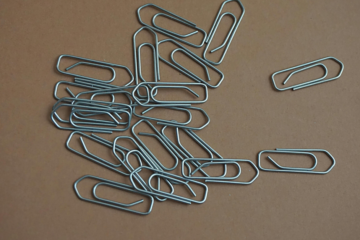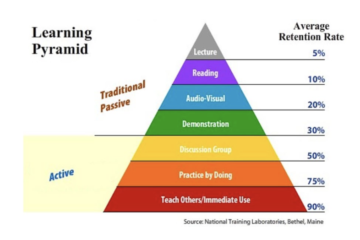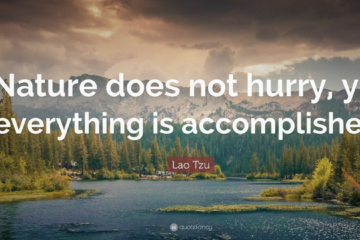JTC Learning Spotlight: Barbara Oakley

If you imagine yourself going back to the time when you were in university, you were expected to learn huge chunks of information but were not taught the exact way of how to learn.
Though there have been many figures in academia that teach, rarer are those that teach you how to learn which is why today I would like to share with you a particular talk on Google by Barbara Oakley.
Barbara through her research has found that learning is one of the most important skills in life, but also learning how to learn is a skill of itself that can be developed and trained.
I will be breaking down some of the key insights Barbara has highlighted in her talk. This will include the way she approaches her learning and what methods she uses to teach and coach her students in this art.
The Two Types Of Learning Modalities
Barbara suggests through her research that there are two types of thinking. The first mode is called: focused mode.
When you are in focused mode, you know the tasks you want to do. You know exactly what are the processes you have to take into achieving your end result. Think of it as a skill you already know, when you are going through the motions of that skill, you are in focused mode.
Focused mode in that sense is straightforward and organized.
The second type of thinking is called: diffused mode. When you are in diffused mode, you are learning something that you don’t know. Due to this, you have to access “diffused” areas of the brain.
If you take a look at a brain scan of someone in diffused mode, you will see that the areas being accessed in the brain is at random, and this is because when you tackle a task that is new to you, you will have to access areas of the brain to form a mental model of how to do a new task.
When learning a new skill (diffused mode), the best thing you can do is to take a break, as diffused mode thinking takes up a lot of energy which takes time for new neural pathways to form.
Once a pattern of how things are done is solidified, diffused mode will lead to focused mode. Focused mode and diffused mode are the two modes of thinking your brain switches through when doing any task.
Each Individual Has Different Ways Of Learning
There can be many ways a person tackles a task to achieve the exact same result. Why is that? It’s because each individual has different ways of learning and absorbing information.
Barbara in her talk shares that each people learn differently.
Some people are like race-car, absorbing information really quickly and have the ability to pick things up really fast. On the other hand, some people that are like tortoises where new information takes time to seep in.
Both a race-car brain and a tortoise brain have its advantages and disadvantages. For example, arguably if someone is a slow learner (tortoise-brain), people would perceive that as a disadvantage.
Barbara, argues however that tortoise-brained individuals absorb information at a far deeper level compared to people that pick-up information fast. Meaning, they will be more consistent in the long term and understand the subject matter at a deeper level.
A race-car brain’s advantage on the other hand would be their speed and the ability to pick things up quickly. A clear disadvantage of a race-car brain is that they tend to be rather scatter-brained and don’t stick to one thing for a very long time due to how fast they can learn.
There also consists of two types of thinking. The first is called a big-picture thinker where a person like this can see the trees for the forest. People like this can be good in tasks such as long-term planning understanding how the moving parts of a project go together but they may lack practicality in their approach.
On the other hand, there are detail-oriented thinkers. They can see chunks very well and execute on tasks flawlessly. Detail-oriented thinkers are doers. They get things done efficiently. However, what they may lack is being able to create direction and vision, hence only seeing the tree for it being just a tree.
Then there are people with poor working memory. Research has shown that the advantage of people with poor working memory, is that they tend to be more creative and have the ability to generate ideas easier than most people. Poor-working memory people however can be associated with ADHD.
Each way of how you learn comes with its advantages and disadvantage and therefor knowing your advantages and disadvantages and how you think is absolutely key onto improving your ability to learn.
Complete Difficult Tasks By First Chunking Things Down
When you are taking a glance at a difficult task that you are dreading to do, Barbara’s research shows that the same areas of the brain light up as if you are seeing physical pain. How crazy is that!
This is the root cause of procrastination because you just don’t want to do the task because it’ll simply take too much mental processing power.
Therefore, a technique to bypass your brain’s mechanism is called chunking, or breaking tasks into bit-sized consumable pieces.
The Pomodoro Technique is a great example of a chunking method, where you would work on something for 25 minutes and take a consecutive 5-minute break, and repeating this until your desired task is completed.
The reason why you chunk things down when learning to give yourself a dopamine hit, for when you complete a small chunk of a task, it’s best to give yourself a small reward (a break) to bypass the pain you feel mentally when looking at a mentally difficult task.
This enforces a positive feedback loop where you can ride the emotions and continue working on the task at hand.
Recall, Homework and Following Your Passion?
Barbara covers these three important parts in her course on: recall, homework and following your passion. These are topics we have covered in many of my previous blog posts, especially that of increasing your short-term memory.
Let’s first talk about recall.
In the talk, Oakley talks that when after learning something, you have to resist the urge to underline things that you have read, and the reason is that you may think that when you are underlining stuff, are registering something in your brain, but that is actually not true.
Instead, try to use your innate ability to actively recall to think about what you have learnt first. Close the book and try to think about what you have learnt.
Second is to “study with other classmates”, or simply talking about what you learn. Studies have shown that when you speak things out loud with other people you are more likely to remember things.
Explain concepts that you have learnt to people where a 10-year-old can understand, because what her research has found was that if you can find a way to explain things simply, you will by default, be able to find a way to understand it better.
Next up is on homework.
Barbara states that homework can be one of the best ways to learn as homework forces you to be in a state of memorization, which can be one of the best ways to increase your memory.
Testing and doing a lot of tests also forces your memory to act better. Many times, when we have thought that we have learnt something, but in fact we haven’t. This lying to ourselves, this of which can be overcome by self-testing or taking tests.
“Tests are the best, self-test yourself on everything. The same hour spent testing, as opposed to studying you will learn far more by taking the test.”
Finally on following your passion.
Follow your passions, although this sounds like cliché advice. This is the key to everything because without the passion to learn things, you will simply not be able to learn. However, sometimes your passions will take time to develop, and also you may passions develop as a result of being good in something.
That’s why you want to broaden your passion. Do things across multiple fields and areas to develop your passions, and the only way to develop skills in multiple areas is to first master the art of learning.



0 Comments